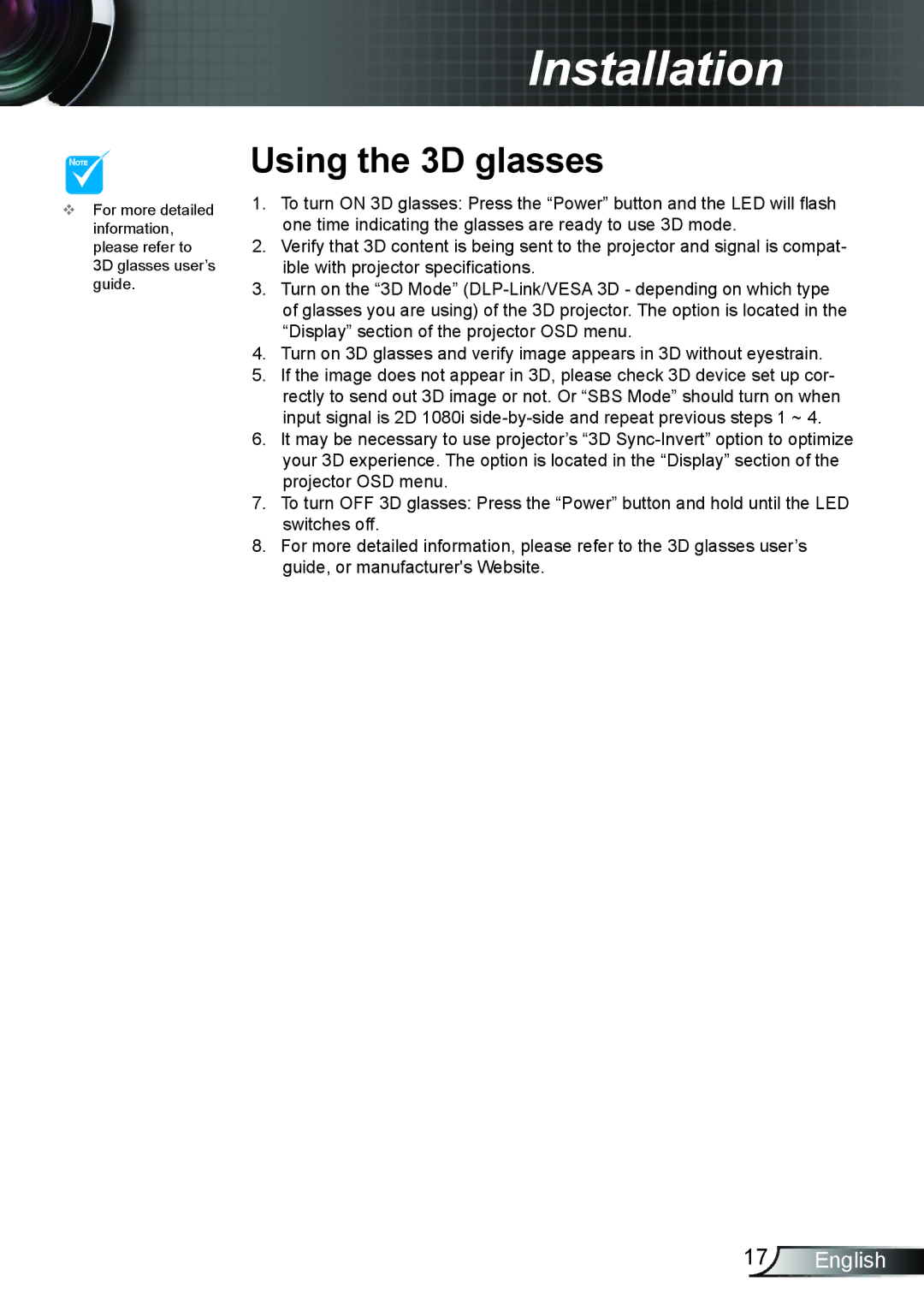HD25, HD25LV specifications
Optoma Technology has established a solid reputation in the realm of projectors, and two of their standout models are the HD25LV and the HD25. These projectors are designed to deliver high-quality visuals and a remarkable viewing experience, making them perfect for home theaters, gaming, and professional presentations.The Optoma HD25LV projector is built with a powerful brightness of 3,200 lumens, making it highly effective in both dark and well-lit environments. This level of brightness ensures that images remain vivid and clear, even in rooms where ambient light can be an issue. Additionally, the HD25 is slightly less bright than its counterpart, with a lumens rating of 3,000, yet it still delivers impressive image quality.
Both models feature Full HD 1080p resolution, capable of producing stunningly detailed images. The use of DLP technology enhances the color richness and contrast ratios, ensuring that viewers enjoy deep blacks and vibrant colors. With a 25,000:1 contrast ratio, the HD25 and HD25LV allow for a more dynamic and immersive viewing experience.
Versatility is another hallmark of these projectors. The HD25 and HD25LV come equipped with multiple inputs, including HDMI, VGA, and USB, making them compatible with a wide range of devices, from Blu-ray players to gaming consoles. This connectivity allows users to easily switch between devices while enjoying high-definition content without compromise.
On the technology front, both projectors boast an advanced color wheel that supports sRGB and a wide color gamut, providing lifelike and saturated color reproduction. Furthermore, the projectors incorporate the Texas Instruments DLP chip, which enables excellent motion handling, making them ideal for fast-paced action movies and gaming sessions.
In addition to their impressive performance, the HD25 and HD25LV are designed with user-friendliness in mind. They include features such as a vertical lens shift and keystone correction, which make setup and adjustments straightforward. Furthermore, their compact design ensures they can be easily transported or installed in various settings.
With long lamp life ratings of up to 8,000 hours in economic mode, users can enjoy extended viewing periods without the need for frequent replacements, thereby enhancing the overall value of these projectors.
In summary, the Optoma HD25LV and HD25 projectors stand out for their exceptional brightness, Full HD resolution, advanced color technologies, and user-friendly features, making them ideal solutions for anyone seeking a premium viewing experience.

